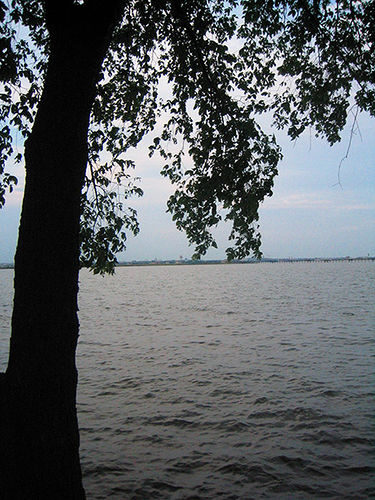A recent Auburn University study provides some real numbers to back a theory we’ve all known was true for some time–planting a shade tree near your home reduces energy bills significantly in the spring and summer months. The study, conducted in Auburn, Alabama, included 160 homes with different levels of shade. Each home’s energy usage was monitored and compared to other houses with similar energy-using patterns, size, type of cooling system, etc. Here are some highlights from the study:
- Houses with trees on the west side of their home had a “much lower power bill”
- Older homes had the most shade coverage, because people did not use to rely on air conditioning as much to keep them cool
- For each degree you raise your thermostat in the summertime you can save 3.3% on energy costs
- Children under age 12 consume the most power in a home as they watch television, play games and frequently leave lights on. (I could have told them this one!).
 Fall and early winter are the perfect seasons to plant a tree. This time of year many nurseries are trying to reduce their inventory of trees heading into the winter, so you may find a deal on trees to plant around your lot. The ideal tree to plant on the west side of your home is one that has heavy foliage in the summer, but loses most of its leaves during the winter to allow sunlight to shine through and warm your home naturally.
Fall and early winter are the perfect seasons to plant a tree. This time of year many nurseries are trying to reduce their inventory of trees heading into the winter, so you may find a deal on trees to plant around your lot. The ideal tree to plant on the west side of your home is one that has heavy foliage in the summer, but loses most of its leaves during the winter to allow sunlight to shine through and warm your home naturally.
While you have the shovel out, consider planting a tree near your outside air conditioning unit. The shade will keep the unit cooler and help it operate more efficiently. Be sure to plant far enough from the unit to allow proper airflow, and account for the tree’s growth over time.
In my town real estate developers plow trees down when planning neighborhoods. It literally hurts to watch the trees being knocked over because they could provide much needed shade to new homeowners, reducing their electric bill and the amount of energy they consume. Hopefully this study, and more like it in the future, will encourage developers and builders to plan around trees as much as possible to offer homeowners a shaded lot.
Photo courtesy of alykat
